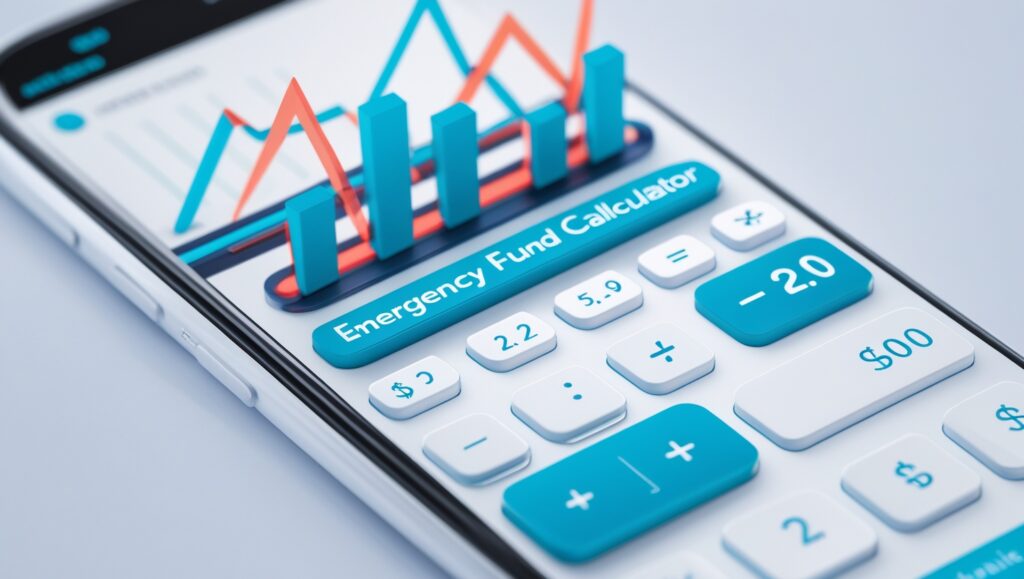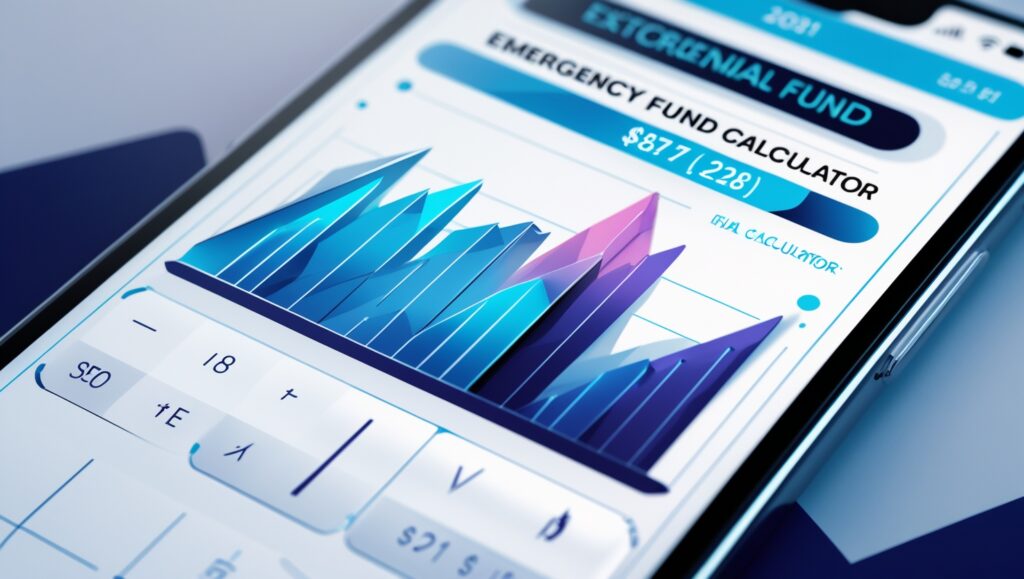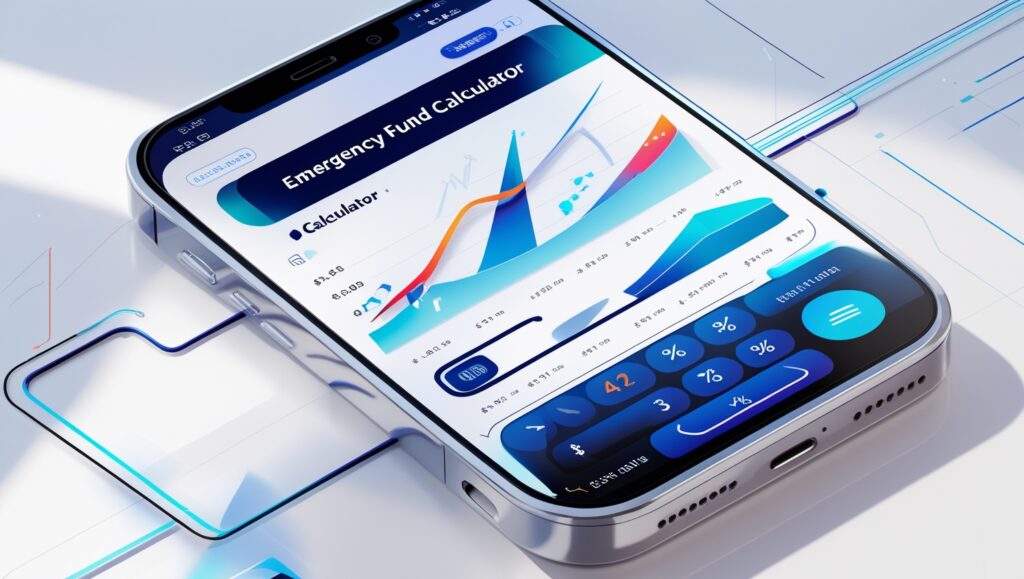Emergency Fund Planner
Calculate how much you need to save for emergencies and create a personalized plan to build your financial safety net
Current exchange rate: 1 USD = 87 INR
Emergency Fund Calculator
Calculate how much you need to save for your emergency fund based on your monthly expenses and desired coverage duration.
Your Emergency Fund Plan
Your Savings Plan Breakdown
To reach your emergency fund goal of ₹2,10,000 in 12 months, you'll need to save approximately ₹15,833 per month or ₹3,958 per week.
More Financial Tools & Resources
Visit easyfinancepro.com for comprehensive financial planning tools, investment calculators, debt management solutions, and expert advice to help you achieve financial freedom.
Explore easyfinancepro.comRelated Financial Calculators
Emergency Fund FAQs
Most financial experts recommend having 3-6 months of essential living expenses in your emergency fund. This amount provides a sufficient safety net for common financial emergencies like job loss or unexpected medical bills. If you have irregular income or work in an unstable industry, you may want to aim for 6-12 months of expenses.
To calculate your ideal emergency fund amount, multiply your essential monthly expenses (housing, food, utilities, transportation, insurance) by the number of months coverage you want.
Your emergency fund should be kept in a safe, liquid account that's easily accessible in case of emergency. The best options include:
- High-yield savings accounts: Offer better interest rates than regular savings accounts while keeping your money accessible.
- Money market accounts: Provide check-writing privileges and debit card access while earning interest.
- Short-term certificates of deposit (CDs): For portions you won't need immediately, laddered CDs can provide slightly higher returns.
Avoid keeping your emergency fund in investments that can lose value or have withdrawal penalties.
True emergencies include:
- Unexpected medical expenses not covered by insurance
- Essential home repairs (like a leaking roof or broken furnace)
- Critical car repairs needed for work transportation
- Living expenses during unexpected job loss
- Essential travel for family emergencies
Your emergency fund should not be used for planned expenses, vacations, discretionary purchases, or non-essential home improvements.
Building an emergency fund on a tight budget is challenging but possible:
- Start small: Aim for ₹500/₹1000/$100 initially.
- Automate savings: Set up automatic transfers of even ₹100/$5 per paycheck.
- Reduce expenses: Identify one expense you can reduce and redirect that amount to savings.
- Use windfalls: Apply tax refunds, bonuses, or gifts to your emergency fund.
- Increase income: Consider a temporary side gig specifically for building your emergency fund.
- Save consistently: Focus on the habit rather than the amount at first.
Remember that any amount saved provides more protection than none at all.
This depends on the type of debt:
- High-interest debt (credit cards): Focus on paying this down while building a small emergency fund (₹10,000-₹50,000/$500-$1000).
- Moderate-interest debt: Split your efforts between debt repayment and emergency savings.
- Low-interest debt (student loans, mortgages): Prioritize building your full emergency fund first.
Without any emergency savings, you risk accumulating more debt when unexpected expenses arise. A small emergency fund prevents this cycle.
Emergency Fund Tips & Best Practices
Why You Need an Emergency Fund
An emergency fund is your financial safety net for unexpected expenses like medical bills, car repairs, or job loss. It helps you avoid debt when life throws you curveballs. According to the Federal Reserve, 40% of Americans would struggle to cover a $400 emergency expense without borrowing or selling something.
Where to Keep It
Use a high-yield savings account or money market account. These offer liquidity and better interest rates than regular savings accounts. Avoid investing your emergency fund in stocks or bonds where value can fluctuate.
Savings vs. Debt
Start with a small emergency fund (₹10,000-₹50,000/$500-$1000) while paying off high-interest debt, then build your full emergency fund. This prevents new debt when unexpected expenses arise.
Building Your Fund
Automate transfers to your emergency fund each payday. Treat it like a non-negotiable bill. Start with what you can afford, even if it's just ₹500/$25 per paycheck, and gradually increase as possible.
When to Use It
Only for true emergencies: unexpected medical expenses, essential home/car repairs, or necessary expenses during job loss. Create specific criteria for what qualifies to prevent misuse.
Replenishing
If you use your emergency fund, prioritize rebuilding it. Adjust your budget to replace the funds as quickly as possible. Resume your regular savings contributions immediately after an emergency.
Master Your Finances with EasyFinancePro
At easyfinancepro.com, you'll find a complete suite of financial tools, educational resources, and personalized advice to help you build wealth, reduce debt, and achieve your financial goals.
Start Your Financial JourneyEmergency Fund Dashboard
Your Progress
Savings Reminders
Set reminders to contribute to your emergency fund regularly.
Track Your Entire Financial Life
For a comprehensive financial dashboard that tracks your net worth, investments, debts, and savings goals, visit easyfinancepro.com and take control of your financial future.
View Full Financial DashboardEmergency Fund Calculator : Plan Your Financial Safety Net Smartly
In today’s unpredictable world, having an emergency fund is no longer optional – it is essential for your financial stability. Whether it’s a sudden job loss, medical emergency, home repairs, or any unplanned expense, an emergency fund acts as your financial cushion. But how do you know how much emergency fund you need? This is where an Emergency Fund calculator comes into play.
What is an Emergency Fund Calculator ?
An Emergency Fund calculator is an online financial tool that helps you calculate the exact amount you need to keep aside as your emergency savings. It is based on your monthly expenses, financial responsibilities, lifestyle, and risk appetite.
Using an Emergency Fund calculator ensures that you neither save too little nor block too much money unnecessarily in your emergency fund.

Why is an Emergency Fund Important ?
✅ Peace of Mind
Knowing that you have enough funds to survive emergencies reduces financial anxiety.
✅ Avoids Debt Trap
Without an emergency fund, you may end up taking expensive loans or using credit cards at high interest rates during emergencies.
✅ Protects Your Investments
You won’t need to break your long-term investments at loss if you have an emergency fund ready.
✅ Ensures Financial Stability
It keeps your financial goals on track even during tough times.
How Does an Emergency Fund Calculator Work ?
An Emergency Fund calculator works on a simple formula:
Emergency Fund = Monthly Expenses x Number of Months you want to cover
Most experts recommend keeping 3 to 6 months of your essential expenses as an emergency fund. For example, if your monthly expenses are ₹30,000, your emergency fund should be between ₹90,000 to ₹1,80,000.
Factors Considered by Emergency Fund Calculator
- Monthly Household Expenses

Your total expenses like rent, groceries, bills, EMIs, childcare, transport, and utilities.
- Job Stability
If you are self-employed or have unstable income, you may need a larger emergency fund.
- Dependents
More dependents mean higher monthly expenses, thus a bigger emergency fund.
- Health Insurance
If you lack health insurance, your emergency fund should cover potential medical costs too.
- Other Obligations
Such as elderly care, education expenses, or any recurring financial responsibility.
Benefits of Using an Emergency Fund Calculator
✅ Accurate Calculation
No need for guesswork; you get an exact fund requirement based on your lifestyle.
✅ Better Financial Planning
Align your savings goals confidently by knowing how much you must keep aside.
✅ Prepares You for Uncertainties
Life is unpredictable. An Emergency Fund calculator ensures you are always ready.
✅ Easy to Use
No complex formulas; just input your expenses and get results instantly.

How to Use an Emergency Fund Calculator?
Using our Emergency Fund calculator is extremely simple:
- Enter your monthly expenses. (e.g. ₹45,000)
- Select the number of months you want to cover. (e.g. 6 months)
- Click Calculate.
The calculator will show you the total emergency fund amount you need to build.
Who Should Use an Emergency Fund Calculator ?
🔹 Salaried Employees – To cover job loss risks
🔹 Self-Employed Professionals – For income fluctuations
🔹 Freelancers – For delayed payments or low months
🔹 Retired Persons – For medical emergencies
🔹 Students – For sudden education or living expenses
In short, everyone should use an Emergency Fund calculator to secure their financial future.
Emergency Fund Calculator vs Manual Calculation
| Manual Calculation | Emergency Fund Calculator |
| Requires knowledge of recommended months | Gives suggested number of months |
| Time-consuming | Instant result |
| Prone to errors | Accurate calculation |
| Hard to adjust scenarios | Easy to change inputs and compare |
Where to Keep Your Emergency Fund ?
Your emergency fund should be easily accessible. Best options include:
✅ High-interest savings account – Earns interest and can be withdrawn anytime.
✅ Liquid mutual funds – Slightly better returns with quick redemption (usually 1 working day).
✅ Sweep-in FD linked to savings account – For better liquidity and interest.
Avoid locking your emergency fund in long-term FDs, PPF, or risky assets like stocks.
Common Mistakes to Avoid While Building an Emergency Fund
❌ Saving too little. Underestimating expenses can leave you vulnerable.
❌ Using it for non-emergencies. Keep it strictly for true emergencies only.
❌ Investing in illiquid assets. The fund should be instantly accessible.
❌ Not replenishing after usage. Always refill your emergency fund after using it.
Why Use Our Emergency Fund Calculator ?
Our Emergency Fund calculator is:
✔️ Free and easy to use
✔️ Accurate and instant
✔️ Mobile responsive
✔️ Helps in your financial planning
Start using our Emergency Fund calculator today to build your financial safety net confidently.
FAQs
Q1. What is an emergency fund?
An emergency fund is a savings amount kept aside to cover unexpected financial emergencies like job loss, medical issues, or urgent home repairs.
Q2. How much emergency fund do I need?
Ideally, you should have 3 to 6 months of your essential expenses as an emergency fund.
Q3. Is an emergency fund calculator free to use?
Yes, our Emergency Fund calculator is completely free for everyone.
Q4. Where should I keep my emergency fund?
In a high-interest savings account or liquid funds for easy access.
Q5. Can I use FD as an emergency fund?
Only if it is linked as sweep-in FD for instant liquidity. Otherwise, a savings account or liquid fund is better.
Conclusion
An Emergency Fund calculator is an essential tool for anyone who wants to plan their finances wisely. Emergencies never knock on the door before arriving. Be prepared by using our free Emergency Fund calculator today and build your safety net confidently.
